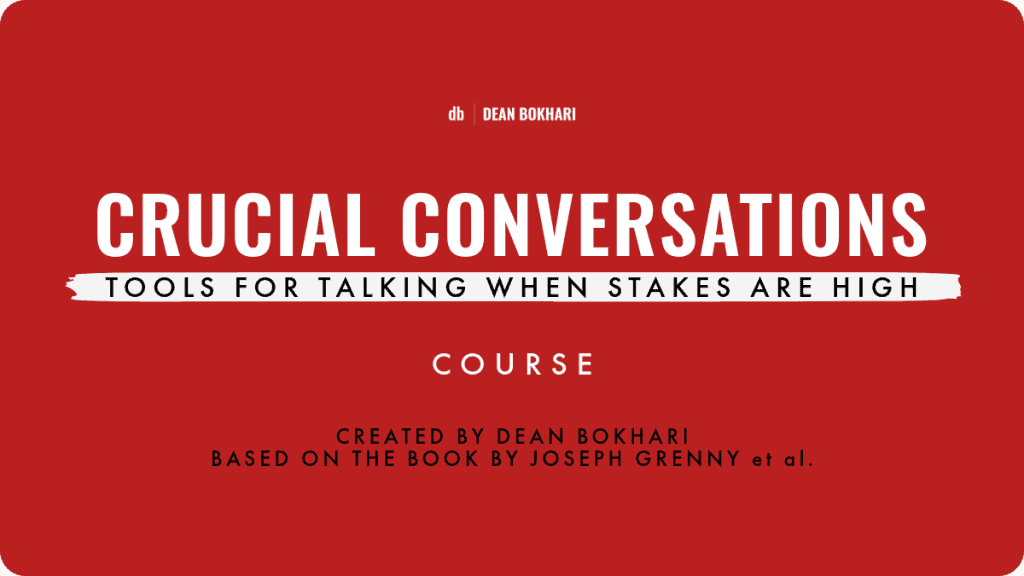3. When people don’t feel safe, the conversation fails
”When faced with pressure and strong opinions, we often stop worrying about the goal of adding to the pool of meaning and start looking for ways to win, punish, or keep the peace.” — Joseph Grenny, et al., Crucial Conversations
Last week, during our usual Tuesday evening date night, my wife Amna and I really got into it.
The night started off just as beautifully as usual.
We sat down for dinner and started chatting.
Then I brought up some behavioral issues we’ve been experiencing with our three-year-old son, Rumi…
I suggested we try a new approach with our son to help him listen and follow directions more effectively.
Amna did not agree.
That’s when our conversation took a turn for the worse.
She expressed her disagreement with my suggestions and patently rejected the idea of trying a different approach.
I could feel my heart rate elevating as I listened to her.
And before we knew it, our “date night” turned into “hate night”.
Eventually, we both recognized that our conversation was going nowhere and would only get worse if we continued—so we decided to put a pin it in for the time being and ended the evening amicably.
But there was a tinge of resentment present between us for the rest of the night.
And it would remain there until we had a deeper, longer conversation that gave us both room to share and understand one another’s opinions on the matter (which we did the next day.)
Have you ever experienced a scenario like mine?
Sometimes, a perfectly normal conversation can quickly degenerate into a shouting contest.
And nothing you say or do can restore peace.
Why does this happen?
Usually, you can trace it back to the atmosphere, or the general vibe, of the conversation.
Here’s what I mean by that:
In any conversation, the participants either feel safe or unsafe…
- When the atmosphere is ‘safe’, the participants are more open to each other. In an environment like this, even criticism and disagreement is less likely to offend others. And you can easily discuss even highly controversial topics with less of a risk that you’ll be getting someone all fired up and offended.
- But when the atmosphere of a conversation is ‘unsafe’, the participants do not share their opinions openly and tempers begin to rise. As we mentioned earlier, if you don’t feel safe in a conversation, adrenaline kicks in and it becomes incredibly hard to think rationally.
The moment someone you’re talking with begins to feel like the atmosphere/vibe of your conversation is in the ‘unsafe’ zone, it becomes extremely difficult to restore their confidence and trust again (if it was ever there in the first place).
At this point, perfectly benign remarks are misunderstood and a complete failure of mutual communication takes place.
Identifying an ‘unsafe’ conversation isn’t hard…
You can do it by observing how each participant behaves.
These behaviors are broadly categorized into silent and violent behaviors or reactions.
- A silent reaction is when people start hiding their opinions. They may use sarcasm and other indirect methods of communication to share their opinion.
- For example, rather than telling you what they really think about those cool new pants you wore to the office today, a person might say something like, “That’s a nice-fitting pair of pants you’ve got on! No one will ever think they’re three sizes too small for you. Nope, not at all…”
- A violent reaction is when one or more people in a conversation try to force their opinions on others.
- For example, they may speak loudly, let no one else speak, hinder others from sharing their opinions, and indulge in other similar activities. Or, they’ll try every trick in the book to convince you that they’re right.
So, now you know the telltale signs of an unsafe conversation.
In our next lesson, we’ll cover how you can prevent a conversation from taking any wrong turns in the first place by making others feel safe as they converse with you.
See you then.
If you’re enjoying this free course on Crucial Conversations, you’ll love the full version of this training program. Learn more and register below 👇
Regularly: $294.00
Now only: $275.00

